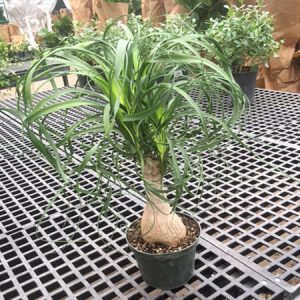Description
For horticultural purposes tulips are divided into the following groups, which are chiefly defined by their flower characteristics, stem length and time of flowering. By choosing tulips from across the groups you can have a sequence of flowering throughout spring. These replace the older divisions given in parentheses below.
Miscellaneous Group (Division 15) – All species and hybrids not included in other divisions. There are 2 informal sections: low growing, 4-8″ tall, with star shaped flowers, 2-3″ across, with pointed tepals, and the taller growing, 8-14″ or more tall, with mainly bowl shaped flowers, 2 ½-6″ across, mostly rounded bases and tepals. Very early to late season flowering. Grow in a rock garden or border. Keep dry in summer. The smallest ones also be grown in a bulb frame. T. sylvestris is suitable for naturalizing in fine grass.
Select tulips cultivars and species based on hardiness zones. Most tulips require a long cold winter and dry summer and thrive in Zones 4-6. In Zones 7-8, fewer are adaptable. In Zones 9-10, they should be grown as annuals, and bulbs must be precooled at 40–45 degree Fahrenheit for 8-10 weeks before planting. Grow in fertile well drained, neutral to slightly acidic soil in full or afternoon sun. In Zones 7-10, choose a shady site or one with morning sun only.
Rock garden species and cultivars prefer more sharply drained soil. All dislike excessive moisture. Plant most cultivars at a depth of 8″ to the base of the bulb, most species should be planted 4″ deep or less. The optimum season to plant depends on hardiness zone, ranging from early autumn (Zone 4) to early winter (Zones 9-10). Depending on the desirable effect, plant nearly bulb-to-bulb or allow for a spread of 1-3″ for most tulips, and 5-6″ for Greigii and Kaufmanniana Group Tulips, which have spreading leaves. If perennial flowering is desired, apply a balanced liquid fertilizer after planting. Deadhead after flowering. Allow the foliage to yellow for about 6 weeks after flowering before removing it. The bulbs of species, and many Greigii and Kaufmanniana Group tulips, may be left in the ground for several years. For those belonging to other groups, they may be lifted annually, once the leaves have died down, and ripened in a warm, dry place. Replant the largest bulbs. And grow smaller ones in a nursery bed for a year. Smaller tulips may be grown in containers in a bulb frame or alpine house, in a mix of equal parts loam, leaf mold, and sharp sand. When in growth water moderately, applying a balanced liquid fertilizer weekly for 3 or 4 weeks after flowering, keep dry in summer, and repot annually.
Prone to root rot, and bulb rot, are common in wet or poorly drained soil. Gray mold, slugs, snails, aphids, and nematodes.





